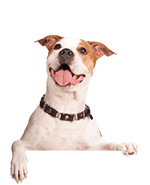Sure, anyone can let the dog out—but not everyone leaves a lasting impression.
What sets Columbus’ favorite pet sitters apart (…shoutout to our crew at Hands N Paws)?
- They turn post-visit updates into keepsakes
- They spark buzz at Upper Arlington dog parks and in Bexley mom groups
- They inspire surprise tips—like $20 for a 20-minute visit!
The secret? The best pet sitters in Columbus don’t just check boxes—they connect on a deeper level. They speak to the heart of every pet parent using thoughtful, psychology-driven practices.
After caring for 5,000+ pets across the city—all the way from Whitehall to Dublin—we’ve honed five neuroscience-backed techniques that transform:
✔️ Everyday tasks → Emotion-filled “They get us” moments
✔️ Walks → Stories shared on Nextdoor
✔️ Routine updates → Screenshottable messages that melt hearts
Let’s break down what it really takes to stand out—and stay top of mind.
1. Be the Person Who Gets Their Pet
(Because Anyone Can Refill a Water Bowl)
Inspired by Dale-Carnegie principle:
“Become genuinely interested in others.”
Pet parents don’t just need someone to complete tasks—they crave someone who truly understands their furry family member. Here’s how to show you’re that person:
Remember the little things.
Those special quirks? They’re your golden tickets:
❌ “Fed Luna, took her out.”
✅ “Luna greeted me with her signature ‘sassy paw’ move—then inhaled breakfast like a tiny wolf claiming her prey!”
Mirror their love language.
Speak their pet’s “dialect”:
If they say: “Adventures”
You say: “We braved the Amazon rainforest (aka your backyard) today—complete with squirrel sightings!”
Spot progress like a proud aunt/uncle.
For shy pets:
“Mittens didn’t hiss today! Just gave me her best ‘I’m tolerating you’ glare from under the bed. We’re getting there!”
Why This Works:
When you notice their pet’s unique quirks and mirror their special phrases, you trigger a powerful biological response in pet parents—their brain actually releases oxytocin (the “love hormone”), creating warm, fuzzy feelings toward you. By highlighting their pet’s progress in training or behavior, you’re not just giving updates—you’re giving them proud “pet parent moments” that light up their brain’s reward centers. This is why a large portion of pet parents lean towards paying more for a sitter who “gets” their pet this deeply—because you’re not just doing a job, you’re celebrating what makes their furry family member one-of-a-kind.
2. Make Your Visit Updates Unforgettable
(Because “Everything Went Well” Is Boring)
Inspired by Dale-Carnegie principles:
“Remember that a person’s name is, to that person, the sweetest sound in any language.”
“Smile.”
“Talk in terms of the other person’s interests.”
Your visit updates aren’t just reports—they’re emotional lifelines for pet parents. Here’s how to make them feel your warmth through the screen:
The Smile Trick (How to “Hear” a Grin in Text)
Pet parents should feel you smiling when they read your messages. Try:
- Exclamation points = wagging tails in text form
- ❌ “Took Bella out.”
- ✅ “Bella bounced to the door when she saw the leash—someone was very ready for her adventure today!”
- Smiley Emojis = instant tone setters
- “Mr. Whiskers ‘helped’ me work by sitting on my keyboard… twice. 😅”
Name Magic (The Sweetest Sound to Pet Parents)
Studies show saying a pet’s name triggers the same joy in pet parents as hearing their own name. Here’s how to use it:
- The “Name Sandwich” Technique
- “Luna did her happy dance when I arrived! Then Luna girl showed off her new ‘sit-pretty’ trick for treats.”
- Nicknames = next-level bonding
- If they call their dog “Buddy,” you say “The Budster”
- Cat named Shadow? Try “Her Royal Shadow-ness”
Framing: Turn Tasks into Cherished Moments
Reframe routines through the pet parent’s emotional lens:
- Bad: “Fed him, cleaned bowl.”
- Good: “Oliver gobbled his salmon kibble like he hadn’t eaten in years—then licked the bowl spotless (see pic!).”
- Pro Move: Compare progress
- “Remember how Charlie used to hide under the bed? Today he greeted me at the door with tail wags!”
Why This Works:
Your updates trigger powerful psychological connections—using pet names activates the same brain response as hearing their own name, smiling language mirrors real joy through mirror neurons, and progress highlights validate owners’ efforts. This “Names + Smiles + Wins” formula creates updates pet parents save and reread, because you’re not just documenting care—you’re proving their pet is truly seen.
3. Turn “Oops” Into Trust-Building Moments
(Because Mistakes Happen—It’s How You Handle Them That Counts)
Inspired by Dale-Carnegie principles:
“If you’re wrong, admit it quickly and emphatically.”
“Begin in a friendly manner.”
Pet parents don’t expect perfection—they expect honesty. Here’s how to handle slip-ups like a pro:
Own it immediately.
A spilled water bowl or missed potty break becomes worse if they discover it later. Be upfront:
❌ “Nothing happened today.”
✅ “Quick heads-up: Bella did a Houdini act with her collar when she saw a squirrel! Got her back in 2 seconds—she’s fine but very proud of herself!”
Fix it before they ask.
Show you’re proactive:
“Noticed Max (pup) was eyeing the cat’s kibble like a furry thief—so I set up a baby gate buffet blocker! Crisis averted.”
Add humor when appropriate.
“Mr. Whiskers ‘helped’ me work by walking across my keyboard… twice. Your update now says ‘kkkkkkk’ but don’t worry—I fixed it!”
Why This Works:
Psychologically, admitting mistakes builds trust through the Pratfall Effect (competence shown in recovery), Radical Transparency (vulnerability breeds credibility), and Preemptive Problem-Solving (demonstrating responsibility). Pet parents remember your integrity in handling slip-ups more than the slip-ups themselves. Oops + Ownership + Fix = Stronger Bond.
4. Make Pet Parents Feel Like Experts
(Because Everyone Wants to Be the ‘Best Dog Mom Ever’)
Inspired by Dale-Carnegie principles:
“Make the other person feel important.”
“Let the other person save face.”
“Appeal to noble motives.”
Pet parents secretly worry they’re failing—your job is to make them feel like experts. Here’s how:
Validate their knowledge.
❌ “He pulled on the leash.”
✅ “You were so right about his squirrel obsession—we did extra ‘leave it’ drills today!”
Ask for their advice.
“You know her best—should we try the thunder shirt during storms?”
Spotlight their training wins.
“Your ‘stay’ training worked! He ignored three squirrels today—new record!”
Why It Works:
This approach triggers the Self-Verification Theory (people crave confirmation of their self-view) and Social Reward System activation (validation lights up the brain’s pleasure centers). Pet parents don’t just appreciate you—they bond with you, because you’re the one who “gets” how amazing they are with their pet. Validation + Expertise Spotlights = Pet Parents Who See You As Their “Parenting Partner”
5. Say Thank You Like You Mean It
(Because Gratitude = Loyal Clients for Life)
Inspired by Dale-Carnegie principles:
“Give honest and sincere appreciation.”
“Make the other person feel important.”
“Remember that a person’s name is the sweetest sound.”
Gratitude isn’t politeness—it’s your secret weapon for retaining pet parents. Here’s how to do it right:
Personalized Appreciation
❌ “Thanks for booking me.”
✅ “Winston’s happy grumbles during belly rubs are the highlight of my Wednesdays!”
Milestone Celebrations
“One year ago today, Bella hid under the bed—now she greets me with tail wags! What progress!”
Thoughtful Tokens
- A fridge Polaroid: “Your couch king in his natural habitat!”
- A $3 toy: “Saw this moose toy and knew it had Luna’s name on it!”
Why It Works:
This triggers the Reciprocity Principle (people feel compelled to return kindness) and activates Dopamine Reward Pathways (gifts/validation create literal happiness). Clients don’t just remember your service—they remember the joy you brought them. Genuine appreciation + Personalization = Pet Parents Who Can’t Imagine Anyone Else Caring For Their Pets
Bonus Tip: Be the Sitter You’d Want for Your Own Pet
(The Ultimate Litmus Test)
Before sending that post-visit update or handling a tricky situation, ask yourself:
“Would this make ME feel good if I were the pet parent?”
Columbus pet sitters and dog walkers who become truly memorable—the ones who get holiday cards from clients and emergency last-minute requests—all share one trait: They care for every pet like it’s their own.
Columbus’ Best Pet Sitters Are Here For YOU!
At Hands N Paws, we’ve seen these 5 techniques transform good pet sitters into the kind of caregivers pet parents:
- Beg to move with them when they relocate
- Brag about at Clintonville farmers’ markets
- Refuse to replace—even when cheaper options exist
The magic isn’t in the leash or the treat bag—it’s in the heart and psychology behind every interaction.
Want a pet sitter who gets it? Experience the Hands N Paws difference—where every visit feels like your pet is being cared for by family.















